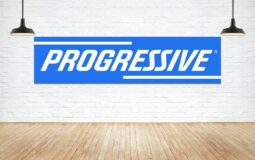Life insurance offers invaluable financial protection for your loved ones in the event of your death. However, obtaining life insurance coverage isn’t always straightforward, as insurance companies evaluate various factors to assess an applicant’s eligibility and determine premiums. Among the most critical factors considered are age and health history. In this article, we’ll delve into how age and health history impact an individual’s ability to obtain life insurance coverage and the premiums they’re likely to pay.
Age and Life Insurance Eligibility:
Age plays a significant role in determining life insurance eligibility. Generally, the younger you are when you apply for coverage, the more likely you are to qualify and secure lower premiums. This is because younger individuals are typically considered lower risk by insurance companies, as they statistically have longer life expectancies and are less likely to die prematurely.
Insurance companies use actuarial tables and mortality data to assess the risk associated with insuring individuals at different ages. Younger applicants are perceived as having more years of future premiums to contribute before potential payouts, making them more desirable from an insurer’s perspective. As a result, insurance companies often offer lower premiums to younger applicants as an incentive to secure coverage early in life.
Conversely, as individuals age, the risk of mortality increases, leading to higher insurance premiums. Insurance companies adjust premiums to reflect the increased likelihood of the insured individual passing away during the policy term. Additionally, older applicants may face stricter underwriting criteria, including medical exams and health assessments, to qualify for coverage.
Health History and Life Insurance Eligibility:
Your health history is another critical factor that influences life insurance eligibility and premiums. Insurance companies assess your health status to determine the level of risk you pose as an insured individual. Factors such as pre-existing medical conditions, past surgeries, family medical history, lifestyle habits, and current medications all impact your insurability and the cost of premiums.
Insurance companies use underwriting to evaluate an applicant’s health status and assess their risk profile. This may involve reviewing medical records, conducting medical exams, and asking detailed health-related questions on insurance applications. Individuals with pre-existing medical conditions or a history of serious illnesses may face challenges in obtaining traditional life insurance coverage or may be offered coverage at higher premiums to mitigate the increased risk.
Furthermore, lifestyle habits such as smoking, excessive alcohol consumption, and participation in high-risk activities can also impact life insurance eligibility and premiums. Smokers, for example, typically pay significantly higher premiums than non-smokers due to the increased risk of health complications and mortality associated with tobacco use.
Impact on Life Insurance Premiums:
Both age and health history significantly influence the cost of life insurance premiums. Younger, healthier individuals generally qualify for lower premiums, reflecting their lower risk of mortality and likelihood of needing to file a claim during the policy term. Conversely, older individuals and those with adverse health conditions are considered higher risk by insurance companies and typically pay higher premiums to offset the increased likelihood of payout.
Insurance companies use medical underwriting to assess an applicant’s health status and determine the appropriate premium rate. Individuals with excellent health and minimal health risks are more likely to qualify for preferred or preferred plus rates, which offer the lowest premiums. On the other hand, individuals with significant health issues or high-risk lifestyle habits may be classified as substandard risks and charged higher premiums or may even be declined coverage altogether.
Conclusion:
Age and health history are two critical factors that significantly impact an individual’s ability to obtain life insurance coverage and the cost of premiums. Younger, healthier individuals generally have an easier time qualifying for coverage and benefit from lower premiums due to their lower risk of mortality. Conversely, older individuals and those with adverse health conditions may face challenges in securing coverage and typically pay higher premiums to compensate for the increased risk.
Understanding how age and health history influence life insurance eligibility and premiums can help individuals make informed decisions when purchasing coverage. It’s essential to assess your individual health status, lifestyle habits, and insurance needs carefully to determine the most suitable coverage options and ensure financial protection for your loved ones in the event of your passing. Additionally, working with an experienced insurance agent or broker can provide valuable guidance and assistance in navigating the life insurance application process and finding the best coverage options tailored to your unique circumstances.










